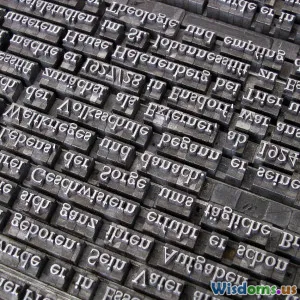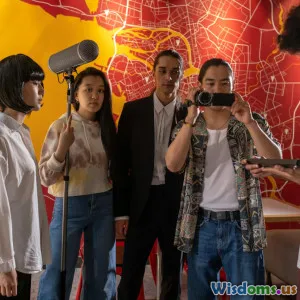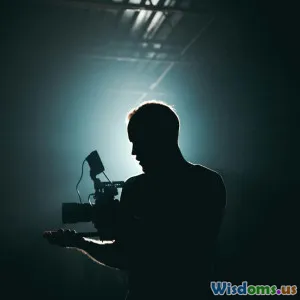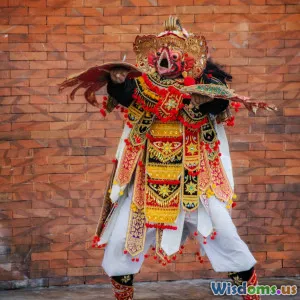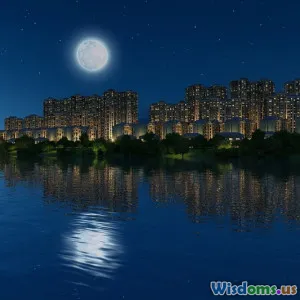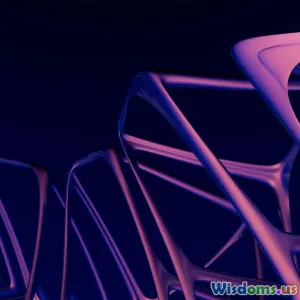
Challenges in Creating Historical Sets for Modern Blockbusters
10 min read Explore the intricate challenges filmmakers face in recreating historical settings for blockbuster movies. (0 Reviews)
Challenges in Creating Historical Sets for Modern Blockbusters
Creating historical sets for modern blockbuster films is more than just building a backdrop; it’s engineering a time machine for audiences—a meticulous recreation of eras long past. The task demands more than craftsmanship; it requires historical accuracy, technological integration, creative innovation, and the capacity to meet modern viewers' heightened expectations. This article explores the multifaceted challenges filmmakers grapple with while crafting authentic historical environments, supported by industry insights and illustrative examples.
Understanding the Stakes: Why Historical Sets Matter
Historical sets form the foundation upon which the narrative, characters, and emotional tone are built. When successful, these settings immerse audiences, breathing life into stories otherwise confined to books or archives. Conversely, inaccuracies can shatter the suspension of disbelief, eliciting criticism and damaging a film’s credibility. For instance, Ridley Scott’s "Gladiator" (2000), lauded for its convincing portrayal of Ancient Rome, benefited enormously from painstaking set design, contributing to its critical and commercial success and an Academy Award for Best Costume Design.
Major Challenges in Creating Historical Sets
1. The Pursuit of Authenticity vs. Artistic License
Historical accuracy is a balancing act. Films like "Dunkirk" (2017) by Christopher Nolan invested in sourcing vintage ships and replicating true wartime environments to convey authenticity. Yet, filmmakers sometimes intentionally alter historical details to suit dramatic needs or narrative clarity.
Research-Intensive Process
Designers collaborate closely with historians and consult primary documents—photographs, paintings, diaries, and archeological findings—to reconstruct scenery and props accurately.
For the HBO series "Chernobyl" (2019), production designer Luke Hull and his team scoured Soviet architecture and historical depictions to replicate a realistic 1980s Soviet Union environment. According to Hull, they even used old construction materials and reversed Soviet-era signage to maintain credibility.
Compromises and Audience Expectations
Although faithful design is critical, some compromises serve cinematic storytelling. Overly austere or unremarkable settings might not engage modern audiences, prompting filmmakers to stylize or amplify details. This was evident in Baz Luhrmann’s "The Great Gatsby" (2013), where the 1920s Jazz Age set fused historical elements with flamboyant theatricality to cater to contemporary tastes.
2. Budget Constraints and Resource Availability
High-production-value historical sets can be exceptionally costly. Constructing large-scale recreations like Victorian streets or ancient palaces entails significant material and labor expenses. For example, constructing the elaborate moat of "Game of Thrones"’ Winterfell set reportedly cost millions.
To alleviate costs, productions often use a mix of physical sets and visual effects. "1917" (2019) combined on-location muddy trenches with CG extensions, saving expenses while enhancing scale.
Moreover, scarcity of authentic materials or skilled artisans knowledgeable about bygone construction techniques can restrict realism. Productions may resort to modern substitutes that look convincing on camera but simplify construction.
3. Integrating Technology and Visual Effects
The advent of CGI and virtual sets has transformed historical filmmaking. Filmmakers like Peter Jackson rely heavily on digital environments to reconstruct lost landmarks such as Hobbiton or Medieval castles.
However, blending tangible sets with digital effects seamlessly is a technical and artistic challenge. The "Lord of the Rings" trilogy showcases some of the best integrations, but other projects struggle with inconsistencies that break immersion.
Additionally, virtual production techniques, such as those used on "The Mandalorian," have begun enabling real-time interactive backgrounds for historical scenes, but such tech requires high expertise and budget.
4. Addressing Diverse Audience and Cultural Sensitivities
Historical narratives often touch on sensitive topics including colonialism, war atrocities, and social inequalities. Set designers and directors must navigate these carefully to avoid misrepresentations or cultural offense.
For instance, the production of "12 Years a Slave" (2013) carefully recreated antebellum plantations, avoiding glamorization, instead reflecting the brutal reality. Such fidelity requires careful consultation and purposeful design choices.
Furthermore, modern audiences increasingly demand cultural inclusivity and correct representation, pushing designers to question traditional portrayals and incorporate nuanced perspectives.
5. Time Constraints and Logistical Obstacles
Blockbuster schedules are tight and unforgiving. Constructing vast historical sets often clashes with tight deadlines. The COVID-19 pandemic introduced disruption, leaving crews to adjust locations, limit personnel, or rely more heavily on digital solutions.
For example, the "Band of Brothers" miniseries faced rigorous timelines, compelling set builders to innovate with modular set designs that could be quickly assembled and modified.
Logistics also includes navigating challenging shooting locations—recreating 18th century London streets requires finding suitable terrains, acquiring permits, or building complete facades in studios.
Illustrative Examples of Overcoming These Challenges
"Lincoln" (2012)
Steven Spielberg’s "Lincoln" involved building an exact replica of the White House’s interior, complete with period-accurate wallpaper, furniture, and lighting. The design team employed 19th-century blueprints, paint analysis, and fabric studies to ensure impressionistic authenticity. The combination of tangible sets with carefully shot close-ups allowed audiences to peer intimately into historical moments.
"Marie Antoinette" (2006)
Director Sofia Coppola’s artistic style led to an unconventional interpretation of Versailles, blending past and present aesthetics. This minimalist, bright set design challenged tradition but captured the emotional tone, reflecting the director’s vision about historical experience’s subjectivity. This project shows the creative flexibility filmmakers sometimes exercise amid challenges.
"The Crown" (TV Series)
The exploration of British royalty spans multiple decades, requiring set redesigns reflecting evolving historical context and tastes. The production increasingly employs detailed miniatures, historically accurate décor, and digitized backgrounds to balance budget and authenticity.
Future Directions and Innovations
Emerging technologies like photogrammetry and LIDAR scanning are revolutionizing historical set creation. These methods allow designers to capture real-world historical landmarks in minute detail and digitally replicate them.
Furthermore, AI-driven generative design tools can assist in rapidly visualizing period-accurate buildings or objects, enabling quicker decision-making.
Virtual and augmented reality not only help designers previsualize sets but also promise immersive historical education experiences, bridging cinema and interactive learning.
Conclusion
The endeavor of creating historical sets for modern blockbusters is a grand orchestration of research, craftsmanship, technological adeptness, and artistic vision. The inherent challenges—ranging from authenticity demands to budgetary limits and evolving audience expectations—push filmmakers to innovate while honoring the past. Each successful historical blockbuster that audiences celebrate owes its immersive magic to the relentless dedication of these creative professionals.
These challenges not only test logistics and design skills but also force cinema to introspect and evolve in its portrayal of human history. For viewers, understanding these complexities deepens appreciation of historical films as laborious artistic triumphs rather than mere entertainment.
The next time cinematic moments transport you centuries back, remember the extraordinary balancing act that enabled such escapism—an embodiment of art, history, and technology united on the silver screen.
References:
- "Set design and historical accuracy in film," Journal of Film & Video Studies, 2021.
- Interview with production designer Luke Hull on "Chernobyl" set creation, Variety Magazine, 2019.
- "Challenges in production design" panel discussion at the 2022 FilmCraft Summit.
- Historical research archives from the British Film Institute.
Rate the Post
User Reviews
Popular Posts










